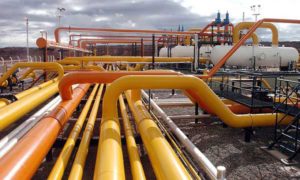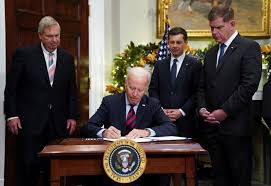 At a time Nigeria is in dire need of all the foreign exchange it can get, $5 billion is trapped under the Anambra basin, an under-explored area with undeveloped proved gas deposits estimated to be over 10 Trillion cubic feet (Tcf).
At a time Nigeria is in dire need of all the foreign exchange it can get, $5 billion is trapped under the Anambra basin, an under-explored area with undeveloped proved gas deposits estimated to be over 10 Trillion cubic feet (Tcf).The basin, reputed as next to Niger Delta in terms of hydrocarbon potentials, has a sedimentary thickness of 9km and covers about 3,000sqKm, with the eastern and western limits of the basin defined by Abakaliki and Ibadan.
“The 10Tcf quoted for Anambra basin is based on few wells drilled. The value could go higher with more gas exploration. The figure as quoted will be a big boost to Nigeria reserve base that has solely depended on Niger Delta basin as its main reserve base”, said an official at Department of Petroleum Resources (DPR), government’s oil and gas regulatory agency.
“The discovered resources in the Anambra basin are in three categories; proved reserves, which perhaps are about 2Tcf, the remaining 8Tcf of the 10Tcf are probably unproved reserves and then the contingent resources. Thus, only about 2Tcf, which is proved is of any significant economic purposes as of now”, said Wumi Iledare, professor of energy economics at the Emerald Energy Institute, University of Port Harcourt.
“Assuming the price of gas remains $2.50 per Million cubic feet (Mcf), the revenue to be injected into the economy in aggregate from Anambra basin would be about $5 billion over the next ten years using 2016 exchange rate. This would expand local economy in terms of output and employment and the multiplier effect in the community would be visible”, Iledare added.
Industry players expect government to also spur private investors into action in Anambra basin through policy support and incentives.
“There is a significant scope for development of a gas market for power and industrial consumption in Anambra basin. To achieve this, policy support and incentives are required to encourage the development of gas resources and associated infrastructure”, Jeff Corey, Chief Operating Officer, Seven Energy, told a delegation from Nigerian Gas Association recently. “Anambra basin will open a whole new area to have gas supply for power and industrial use”, Corey added.
The ultimate support the government can give, according to Dolapo Oni, Energy Research Analyst at Ecobank, is liberalizing the price for gas to enable a ‘willing buyer, willing seller’ arrangement. This will encourage investment in pipelines, gas processing facilities and gas production.
“The more important question is how we monetise these reserves, either through the power sector or LNG or even gas-to-Liquids plants. The key advantage is that with pockets of gas reserves across the country, we can distribute power generation around the country more and reduce dependence on the grid”, said Oni said.
Although conjectural, with right policy and incentives, experts say that within 18 months, two wells can be delivered within Anambra Basin dedicated to a combined cycle gas power plant.
“Approximately, 1Billion cubic feet (Bcf) per year can generate about 1,000MW of electricity at 75 percent output efficiency and minimal losses. Hence, 2Tcf proved reserves in Anambra basin can generate 2,000MW of electricity for approximately 10 years” Iledare said.
The Energy Research Analyst at Ecobank said there are significant investments in cottage industries in the south-eastern part of the country that could benefit immensely from small scale power projects that are distributed within the local distribution network.
Asked what the regulatory agency can do to help jump-start bringing the vast gas resources in Anambra basin to the value chain; “DPR as a regulator may not necessarily do anything because it is not an operator or investor in exploration and production like NNPC. However, if there is a regulatory bottleneck, DPR can come in and facilitate early production in the gas assets”, said the DPR official.
Within the Anambra basin, there are Ugwuoba and Igbariam gas fields; both contain some of the successfully explored gas wells in the basin. Some of the wells in the basin; Igbarim-1, Ajire-1, Akukwa-1 and Akukwa-2, were drilled by Shell-BP between 1938 and 1939 but were abandoned because at that time, the last thing they were looking for was gas.
There are also claims by the Anambra state government that two of the Oil Prospecting Licenses (OPLs 915 and 916) within the basin which belongs to the state government-owned Orient Petroleum has an estimated reserve of 193 million barrels of oil condensate and 30Tcf of gas.
Energy-starved Nigeria is a paradox of gas resource abundance. Its proven gas reserve is about 186Tcf, most of which come from associated gas, with prospects of the reserve base rising up to 600Tcf if deliberate efforts are made to explore for non-associated gas, yet 80 percent of its power plants which are gas-fired remain partially or perpetually offline as a result of non-availability of gas supplies.











